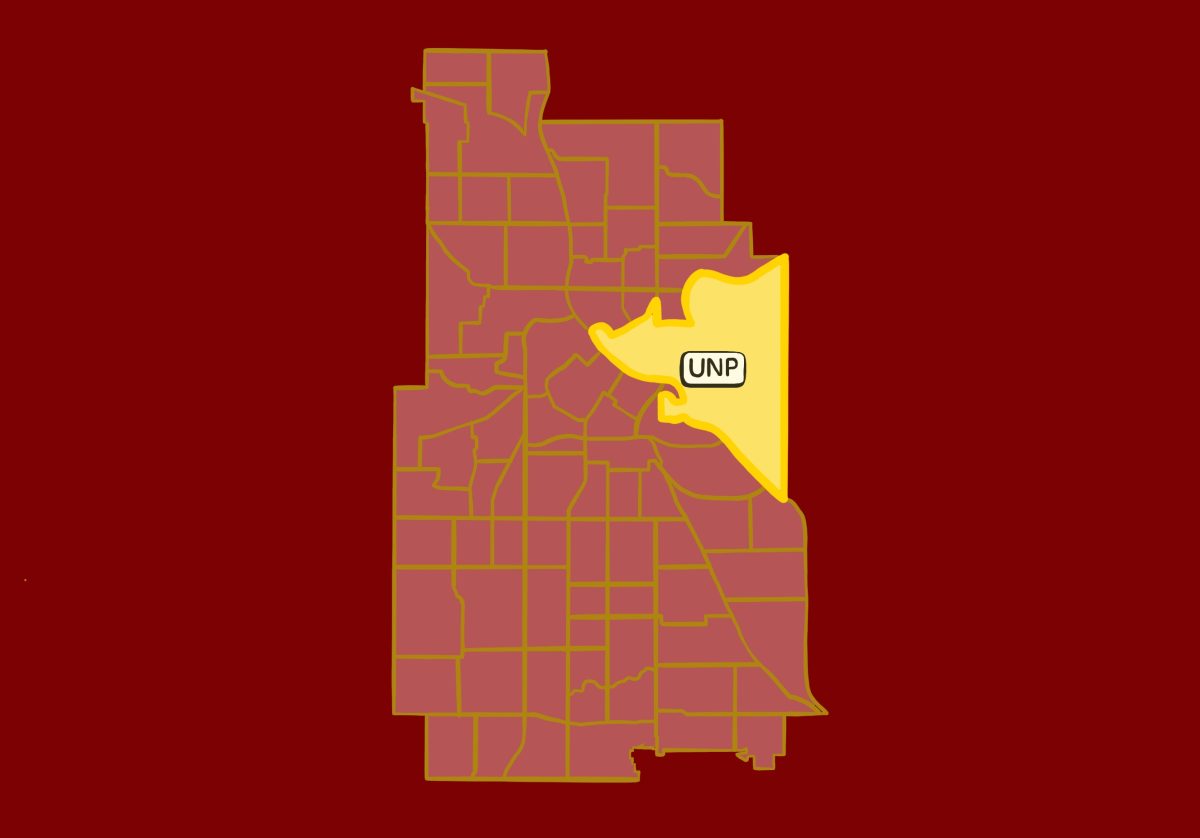In light of decreasing funding from the city of Minneapolis, neighborhood associations surrounding the University of Minnesota are looking to merge into one organization titled University Neighborhoods Partnership (UNP).
Marcy Holmes (MHNA), Nicollet Island-East Bank (NIEBNA), Southeast Como Improvement Association (SECIA) and Prospect Park (PPA) were the four primary neighborhoods in the proposed UNP merger. The potential UNP border also includes the Mid-City Industrial neighborhood and the University area, however, the latter two do not have association boards.
According to DeWayne Townsend, the board president of SECIA and a University professor, the financial plight of the four associations stems from the late 1980s Neighborhood Revitalization Program (NRP).
NRP provided city funding to neighborhoods to operate as individual neighborhood associations, lessening the city’s control of neighborhood functions. Townsend said a review of the fiscal program in the 2010s highlighted some flaws of the program.
“It turned out that this money was mostly going to white homeowners, and so the city was like, ‘Maybe we don’t want to do that so much, we can maybe try to figure out a way to diversify it,’” Townsend said.
The city diversified funding in 2020 by creating Equitable Engagement Funds, which account for a neighborhood’s demographic and economic information to determine how much money it receives. Townsend said while the city’s equitable intention was positive, the neighborhoods were ultimately left with funding cuts.
“At the end of the day, what this meant for a lot of neighborhoods, especially those around the University, is that we had significant cuts in our support from the city,” Townsend said.
In the face of reduced funding, the University neighborhood associations have survived on financial leftovers. However, the secretary of NIEBNA, Barry Clegg, said Nicollet Island — a smaller, higher-income neighborhood — existing on residual funding is not sustainable long term.
“We get the minimum, which is between 10 and 15,000 [dollars] a year, and we have some leftover NRP money that hasn’t been spent yet, but that’s dedicated to NRP functions,” Clegg said. “We can’t even hire an administrative assistant more than about 10 or 15 percent of the time, so we don’t really have enough to do any programs.”
From July to October of 2023, the four neighborhood associations partook in an exploratory phase to discuss the advantages and disadvantages of merging. According to the October edition of the UNP Exploratory Phase Summary Report, a successful UNP merger would likely alleviate financial burdens by allowing neighborhoods to consolidate their funds, which would total over $1 million.
The neighborhood associations have since transitioned into a phase of engagement to gauge support and concerns from community members. While initially on board with the merger, PPA’s community engagement phase has sent the neighborhood in a different direction.
Lynn Von Korff, a board member of PPA, said the Prospect Park community has voted to remain a solitary organization and opted out of continuing merger discussions.
“PPA’s board has decided not to pursue a merger. The decision is consistent with the overwhelming majority of the comments that we received from community members and the board vote was unanimous,” Von Korff said. “We’re excited to focus on PPA projects and events that are moving us forward on equitable engagement.”
Kim Hansen, president of MHNA, said the association boards are centering the discussion around what the neighborhoods have in common.
“When you think about those four [neighborhoods], with the exclusion of Nicollet Island-East Bank, they don’t have a border with the University. The University of Minnesota is
very important to [the UNP] as well as the river and the economy around the river,” Hansen said.
October’s Exploratory Summary Report outlines the neighborhoods’ shared goals, including housing, environment and public safety. The report also notes community engagement and renters’ rights as shared values. For SECIA and PPA, the report lists ceasing to exist as a risk of not merging. Both MHNA and NIEBNA risk losing staff.
Hansen said the focus on commonalities between the neighborhoods is a prominent point of concern for community members.
“[The] goals are to focus less on retaining individual identity, and that’s a big sticking point for a lot of people that have invested many, many years and a lot of blood, sweat and tears into these associations,” Hansen said. “That can still be maintained if we structure the organization correctly, but the main goal is to focus on the things that we all have in common.”
Clegg said sacrificing some of NIEBNA’s autonomy is worth the quality and strength a merged organization would offer.
“If we can combine multiple neighborhoods and combine the resources that those neighborhoods have, yes, we’ll only get a fraction of the time and a smaller fraction than we get now, but we’ll have an executive director, we’ll have an administrative assistant, we’ll have a communications person,” Clegg said. “All these resources we don’t have now and still have enough leftover for programs that benefit the entire area.”
NIEBNA’s board voted unanimously on Thursday to move forward with merger discussions, according to Clegg.
Townsend said while association board members are largely in support of the merger on paper, the major challenge of the merger is figuring out the mechanics of how the UNP would operate — and they’re looking to University student organizations for guidance.
“Then there’s the question of, ‘How are we going to do this?’ We need to talk to folks like the [Minnesota] Daily,” Townsend said. “‘How does the Daily do this, right?’ They have students that are changing all the time, but they’re still a functional organization. So they must have some mechanisms that could be there, and student government as well.”
Whether or not the neighborhoods will proceed with UNP merger discussions is subject to change until all associations take a vote on the matter. According to Hansen, there were questions, but no serious objections to the merger from the MHNA community.
Hansen said while the association boards continue to explore and formulate a merger plan, she encourages community members to voice their questions and concerns on the process.
“I really am encouraging people to either speak up at the meeting or send an email to the board with information or questions or concerns,” Hansen said. “We haven’t received anything yet, so that doesn’t mean they’re not out there. We just haven’t heard them and hopefully we’re able to answer any questions or dispel any concerns as we continue these conversations.”






















